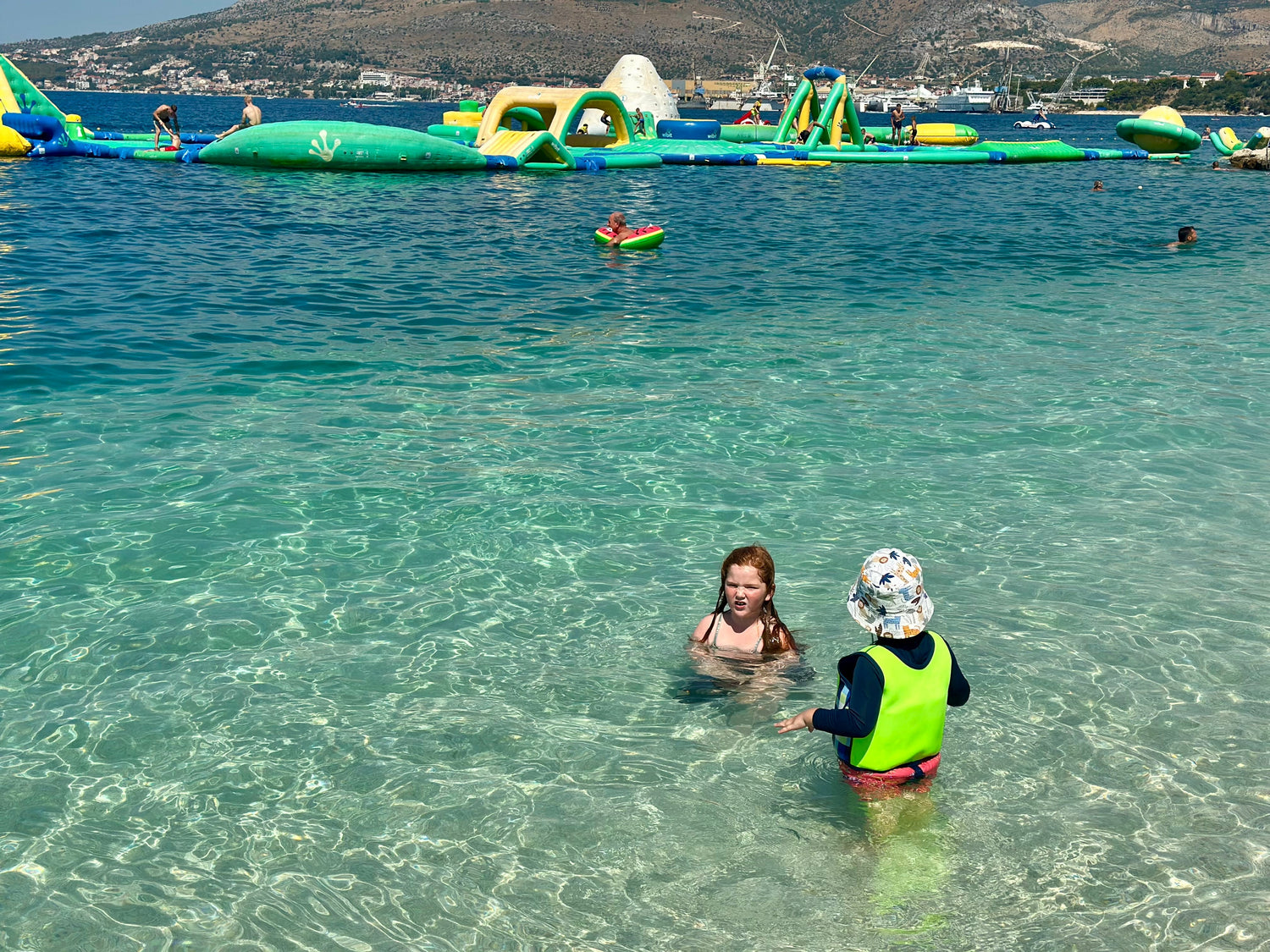Whether you're planning a day at the beach, a boating adventure, or teaching your kids to swim, choosing the right flotation device is crucial for water safety. While swim vests and life vests might seem similar at first glance, they serve distinctly different purposes and come with their own set of regulations and requirements.
What is a Swim Vest?
Swim vests, also known as swim aids or swimming assistance devices, are designed primarily for swimmers learning water confidence and basic swimming skills. They're typically used in controlled environments like pools or calm beach areas.
Key Features of Swim Vests:
- Lighter and more flexible design
- Aids buoyancy
- Allows for greater range of motion
- Usually brightly colored with fun designs (especially for children)
- Typically includes adjustable straps and safety buckles
- Made from softer, more comfortable materials
- Often features UV protection properties
Intended Use:
- Swimming lessons
- Pool activities
- Supervised water play
- Building water confidence
- Indoor water parks
- Shallow water activities
What is a Life Vest?
Life vests, or Personal Flotation Devices (PFDs), are serious safety equipment designed to keep a person afloat in emergency situations, even if they're unconscious.
Key Features of Life Vests:
- Higher levels of buoyancy rating
- Additional safety features (whistle, reflective strips)
- EU-approved materials and design
- Turn unconscious wearers face-up in water
- Heavy-duty zippers and buckles
- Multiple adjustment points for secure fit
- Often include crotch straps for children's versions
Intended Use:
- Boating activities
- Water sports
- Emergency situations
- Open water activities
- Commercial maritime use
- Offshore activities
Legal Requirements and Regulations in the EU
Life Vests (Personal Flotation Devices):
- Must comply with EN ISO 12402 standards
- CE marking is mandatory, showing compliance with European safety standards
- Classified into different performance levels:
- Level 275N: For offshore/severe conditions, heavy clothing
- Level 150N: For offshore/general offshore use
- Level 100N: For sheltered/calm waters
- Level 50N: For swimmers in sheltered waters
- Must meet specific color requirements for high visibility (EN ISO 20471)
- Regular inspection certification required for commercial vessels
- Mandatory carrying of life vests on all recreational vessels matching the number of passengers
- All fastenings and materials must meet durability standards
- Specific requirements for reflective materials and placement
Swim Vests:
- Must comply with EN 13138 standard for swimming aids
- Three classes defined by EU standards:
- Class A: For learning to swim
- Class B: For swim assistance/water familiarization
- Class C: For improved floating position
- Must display CE marking
- Requirements for clear labeling of intended use and limitations
- Color coding requirements based on size/age groups
- Mandatory warning labels in local language
- Material safety requirements for skin contact
- Specific buoyancy distribution requirements
Making the Right Choice
Choose a Life Vest When:
- Engaging in boating activities
- Participating in water sports
- In open water situations
- Legal requirements mandate PFD use
- Safety is the primary concern
- Working on commercial vessels
- Engaging in offshore activities
- Participating in high-risk water sports
Choose a Swim Vest When:
- Learning to swim
- Practicing in controlled environments
- Under constant supervision
- Building water confidence
- Comfort and mobility are priorities
- Using supervised pool facilities
- Participating in structured swim lessons
Maintenance and Care
Life Vest Maintenance:
- Regular inspection of buckles, straps, and fabric
- Check for proper buoyancy annually
- Store in dry, well-ventilated areas
- Clean with fresh water after saltwater exposure
- Follow manufacturer's cleaning instructions
- Document inspections for commercial use
- Replace as per manufacturer's recommendations
Swim Vest Care:
- Rinse after each use
- Check stitching and straps regularly
- Store away from direct sunlight
- Allow to dry completely before storage
- Replace if showing signs of wear
- Follow size guidelines strictly
- Regular chlorine exposure checks
Safety Considerations
Remember these crucial points regardless of your choice:
- Neither type guarantees absolute safety
- Adult supervision is always required for children
- Regular inspection for wear and tear is essential
- Proper fit is crucial for effectiveness
- Replace any damaged or worn equipment immediately
- Follow all local regulations and guidelines
- Ensure all users understand proper usage
- Consider environmental conditions when selecting equipment
Conclusion
While both swim vests and life vests serve important purposes, they are not interchangeable. Life vests are essential safety equipment designed to save lives in emergency situations, while swim vests are training aids meant for learning and confidence building in controlled environments. Understanding these differences ensures you make the right choice for your specific water activities and comply with all safety regulations.
The EU's comprehensive regulatory framework ensures that both types of flotation devices meet strict safety standards, but it's crucial to understand their intended use and limitations. Always consider the specific activity, environment, and user requirements when selecting between a swim vest and a life vest.
Remember: When in doubt about water safety requirements, always consult with local authorities or certified water safety professionals. Your safety on the water depends on making informed choices and following proper safety protocols.





